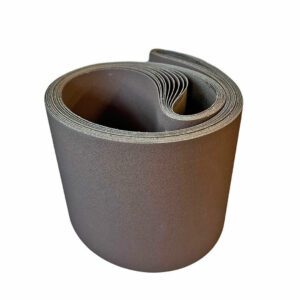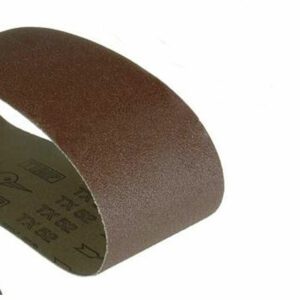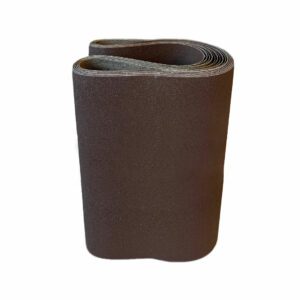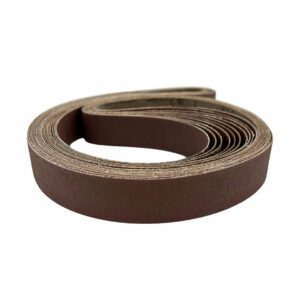How to Select The Correct Abrasive Belt for Larger Abrasive Machines?
When choosing abrasive belts for larger sanding and grinding machines there are a number of factors which need to be taken into consideration.
Abrasive Grit Type
The full range of abrasive grit types are available for large belt grinding machines
- Ceramic aluminium oxide abrasives are best used with harder metals and also in heavier duty grinding operations. For backstand grinding applications ceramic abrasive belts are rapidly becoming the number one option if you are looking for high performance grinding.
- Zirconium Oxide. Not quite as tough as ceramic abrasives the zirconia abrasive grits are still very popular for steel and some aluminium grinding applications but wherever the belt performance can be measured accurately zirconium oxide abrasive belts are often being replaced by the ceramic abrasives
- Aluminium Oxide belts. It is easy to under-estimate the importance of aluminium oxide abrasives. They are not normally as tough as zirconia or ceramic abrasives but in metal working applications they are often the best choice for finer sanding of steels and stainless steels and most definitely the best option when fine sanding softer metals such as aluminium or brass.
- Compact grain belts. Not technically a different abrasive grain, compact grain abrasive belts are an agglomeration of a number of abrasive grains into a larger mass which is then coated on the abrasive belt. Compact grain belts can therefore last considerably longer than a traditional abrasive belt and give a much more consistent finish. They are often used on orbital tube polishing machines such as the Garboli
- Trizact belts. Trizact is in effect another agglomerate type of abrasive. The two main differences between Trizact belts and other compact grain belts is
- they are coated and bonded into a consistent shape from within a slurry.
- All the abrasive grains used are to a measured and tighter tolerance mesh size so they are the most consistent abrasive belt you can buy if consistency of finish is critical.
- Surface Conditioning Belts. Often called conditioning belts or ‘scotch-brite’ belts, as their name suggests they are excellent for refining and blending applications. The biggest benefit of conditioning belts is that they will leave a consistent, burr free finish which is ideal wheel finishing stainless steel in preparation for food or pharmaceutical processing machinery.
Abrasive Belt Strength & Flexibility
Often over-looked by customers when requesting a new belt. Flexibility can make all the difference as to whether a grinding or sanding belt will do what you need.
Cloth belt backings are often given a letter code which gives a clue as to how flexible an abrasive belt is
- F or J weight abrasive belts are very flexible and tend to be used in lighter and less aggressive applications
- H or X weight abrasive belts will be stiffer. As you might expect they are used in intermediate grinding applications, but also in finer sanding belts where flexibility is less important: such as on wide belt sanders.
- Y weight are the heaviest duty backings are often also a polyester cloth to give even more strength to the product. Premium performance backstand grinder belts such as the FX87 ceramics are often a Y weight polyester.
Flexibility can also be varied by drawing the abrasive belt material over a series of rollers and bars to create various flex characteristics. If you believe you may need specific flex characteristics to improve your abrasive belt life then please contact AFS to discuss your specific application.
Is the Abrasive Belt Waterproof?
Many machines, such as the Garboli orbital sanders have the option to use water or coolants both to remove any grinding swarf and also to keep the abrasive belt and the workpiece cool.
Many of our abrasives are made with polyester or poly-cotton backings. Any of these products can be used safely under wet conditions.
Note: If a cotton backed abrasive is used in wet conditions then the abrasive belt is likely to stretch and deform.
 30+ years specialist abrasives experience
30+ years specialist abrasives experience Free standard delivery on orders over £50 + VAT
Free standard delivery on orders over £50 + VAT Technical Solutions Online
Technical Solutions Online




